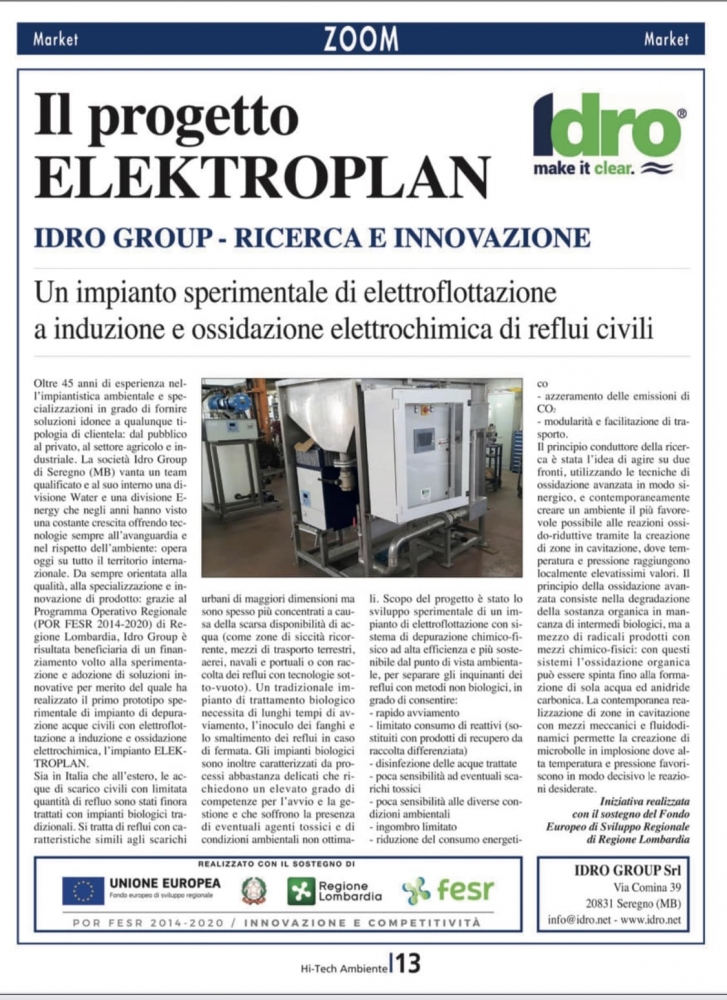Elektroplan - civil water treatment plant with induction electroflotation and electrochemical oxidation
The Elektroplan plant does not use hazardous or toxic chemical reagents and uses only Tun recycled material from waste collection and electricity.
The purification is carried out in several stages and consists of:
- COARSE AND FINE SCREENING
- ACCUMULATION TANK
- ELECTROCOAGULATION
- NANOBUBBLE FLOTATION
- ELECTRIC OXIDATION
Domestic water from the sewer is sent to a filtration section consisting of a coarse screen, and the clarified liquid is sent to a storage tank.
Then, induced electrocoagulation creates flocculation with aluminum or iron hydroxides, and direct current between the electrodes causes induced dissolution of the aluminum droplets.
Next, a micro- and nanobubble generator allows the formation of nanobubbles (air bubbles) necessary for the high efficiency flotation process.
The intermediate stage is characterized by the separation of flocculate and purified water, while the final stage is the removal of residual biological substances (e.g. nitrogen) by an advanced electro-oxidation method.
Finally, the plant is controlled by a PLC, a design invented for such a system.
At the end of the process, this installation releases products such as CO2, H2O and N2 and allows the disinfection of the treated water and the recovery of the treated water.
From the analysis of the results, it was verified that:
- The COD (and related BOD) reduction rate is over 90%.
- The ammonia reduction rate is greater than 99%.
- Suspended solids removal rate is greater than 90%.
- Phosphorus removal is greater than 90%.
The disinfection achieved allows the discharge to comply with the limits proposed by current regulations.










